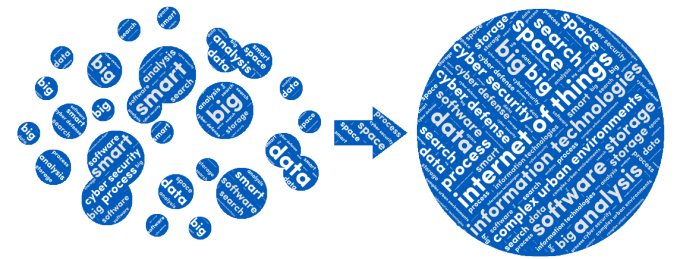What is Multisource Information Fusion?

Multisource information fusion is a sophisticated estimation process that allows users to assess complex situations more accurately by effectively combining core evidence in the massive, diverse and sometimes conflicting data received from multiple sources. It involves integrating information from these multiple sources to produce specific and comprehensive unified estimates about an entity, activity or event.
This definition has some key operative words: specific, comprehensive, and entity. From an information–theoretic point of view, fusion, to be effective as an information processing function, must (at least ideally) increase both the specificity and comprehensiveness of the understanding we have about an entity or else there would be no purpose in performing the function. Multisource information fusion is sometimes implemented as a fully automatic process or as a human-in-the-loop/on-the-loop process for analysis and/or decision support.
Multisource Fusion Systems
Multisource fusion systems seek to combine information from multiple sources and sensors in a wide variety of applications in order to achieve analysis and decision-supporting inferences that cannot be achieved with a single sensor or source.
Data Fusion
Data fusion refers to the combination of data from multiple sensors (either of the same or different types), whereas information fusion refers to the combination of data and information from sensors, human reports, databases, as well as a broad range of contextual data.
Data and Information Fusion Systems
Designing and implementing data and information fusion systems requires a multidisciplinary approach, as seen in the diagram below that shows the disciplines and methods needed to achieve holistic system designs.
The main goal of data/information fusion is to provide estimates of a specific condition in the real world using observable data in the most optimal manner possible. The process to obtain these estimates involves many sub-disciplines, such as signal processing, combinatorics optimization, mathematical and symbolic estimation techniques, human factors and human engineering, to name of few. Together these sub-disciplines are used to refine observables in order to make informed decisions to respond to real-world situations, and possibly take courses-of-action depending on the level of threat if one exists.
